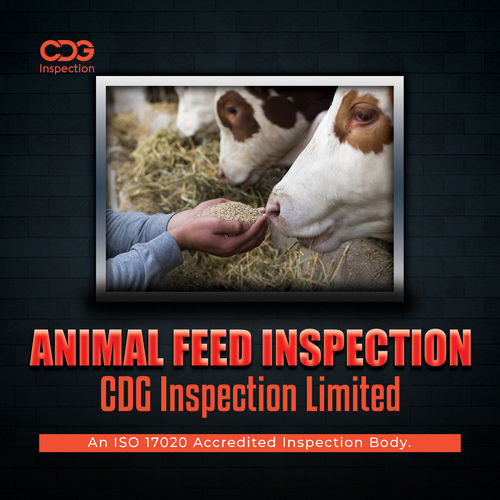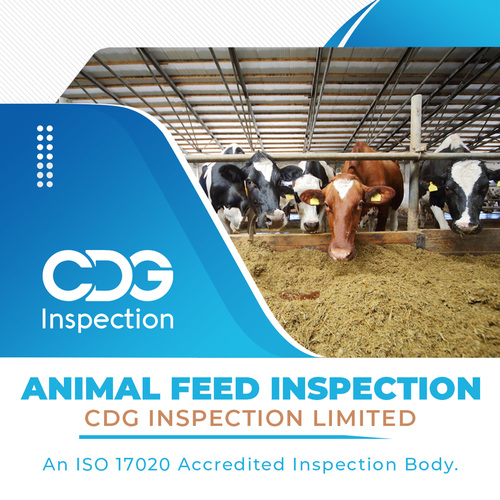Animal Feed Inspection Services in Jaipur
Product Details:
X
Product Description
CIL Provides Accredited Animal Feed Inspection Services in Jaipur, Rajasthan, India.Methods of analysis in the feed industry, Types of analysesconducted by laboratory are proximate analyses, macro minerals, micro mineralsat trace level, chromatographic analyses (such as amino acids, fatty acids,etc.) and chromatographic analyses at trace level (contaminants such asaflatoxins, pesticides and pesticide residues, antibiotics, etc.). Severalstandard and laboratory methods have been developed over the years for thedetection of both nutrients and contaminants in feed ingredients andfeedstuffs. CDG classified the methods into official methods (required by lawand used by regulatory and complying organization), reference methods(developed by collaborating organizations for validation purposes), screeningor rapid methods (usually for large samples to determine whether furtheranalysis are required with more accurate methods), routine methods (can beofficial, standard or modified methods used for routine testing), automatedmethods (may be official or screening methods that adopts automated equipment),and modified methods (usually official or standard methods, which have beenmodified to make it simple and applicable to wide range of samples). Proximateanalyses, Characterization of feeds and feed ingredients for generalnutritional parameters are done using proximate analyses. The ability toconduct proximate analyses is the minimum requirement for laboratories. Proximateanalyses can be conducted in any basic nutrition laboratory while otheranalyses can be done in more complex laboratories. Analytical methods forproximate composition and some other feed components. Parameters,1. Dry matter,Part of the sample that remains after dying at 103 degree C, Crude ash, Part ofthe sample that remains after incineration at 550 degree C. Ash insoluble inacid (sand),Ash that remains after boiling in strong acid. Crude protein, Totalnitrogen content and to calculate the protein content by multiplying thenitrogen content by an appropriate conversion factor (usually 6.25). Kjeldahl method (Nitrogen is convertedinto ammonia which is absorbed in boric acid and titrated against a standardacid), Dumas method (With complete combustionof sample at 950 degree C in the presence of oxygen, nitrogen is converted to agaseous state and reduced to N2, followed by measurement in a thermalconductivity cell).Crude fat, Non polar extractable fraction of the sample. Theextraction can be performed with or without prior acid hydrolysis, both beingcomplementary methods. The laboratory should offer both options. Fibre analysis,Digestion of feed directly in the detergent solution and filtration usingcrucibles (official standard method). Digestion of sample whilst in a nylon bagand then washing the bag containing the digested sample to make it detergentfree. Starch, Starch can be measured by the classical Ewers method or with anenzymatic method. The enzymatic method can be used for all sample types and istherefore preferable. Gross energy, Gross energy represents the total energyvalue of the sample and is measured by bomb calorimeter. Minerals, Minerals aregenerally measured by spectrometric methods following incineration andhydrolysis. Amino acids (excluding tryptophan), The standard method for thedetermination of amino acids is based on the hydrolysis of protein to aminoacids using a strong acid with or without previous oxidation, followed bychromatographic separation and detection after derivatization. Amino acids(tryptophan), Determination of tryptophan is based on an alkaline hydrolysisfollowed by chromatographic. Separation, Fatty acids, The standard method forfatty acids is based on isolation and derivatization, followed by gaschromatographic separation. Vitamins, Determination of individual vitamins isbased on extraction, followed by clean up, concentration if needed, andchromatographic measurement. Reducing sugar Reducingsugars contain the most important sugars, including glucose, fructose andsucrose. Determination is based on the Luff Schoorl principle. Mycotoxins, Mycotoxinsare undesirable substances produced by fungi (moulds). These present apotential danger to animal and human health. The maximum levels are nationallyand internationally regulated. The different methods are based on extraction,purification, chromatographic separation and detection. Pesticides, Pesticidesare undesirable substances whose maximum levels are defined in national andinternational regulations. These regulations demand a low detection limit andpositive identification of the pesticides, which is achieved by using massspectrometric detection. The methods are based on extraction, purification,derivatization, chromatographic separation and identification.
Tell us about your requirement

Price:
Quantity
Select Unit
- 50
- 100
- 200
- 250
- 500
- 1000+
Additional detail
Mobile number
Email








